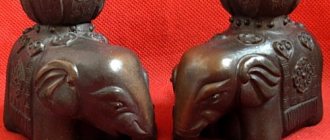Sunflower Symbolism
Some other symbolic meanings of the sunflower include...
Symbolic meanings of Sunflower:
- Focus
- Faith
- Luck
- Magic
- Healing
- Reverence
- Longevity
- Nutrition
- Flexibility
- Spiritual knowledge.
Among Native Americans, the sunflower sign is used at late summer festivals as a symbol of generosity, harvest, and provision. It is an emblem of the sun and thus the sunflower is likened to the life-giving power of the Great Spirit. The color of the plant was noted for its vitality and symbolism of energy as well as fertility.
When talking about the color of sunflowers, I often interpret the color symbolism according to the chakras. As a yellow flower, the sunflower can be compared to the solar plexus (Manipura) chakra. This chakra (and its color) governs the intellect and is the central force of perception as well as self-awareness and personal evolution. One day, I went to a meeting at a spiritualist church... well... the church had a course on automatic writing
, which is one of the ways of communicating with those who have passed on to another physical plane, by writing messages in a state of active consciousness.
I always found it surprising that the course instructor insisted that we use only yellow sheets of paper for this exercise. She pointed out that the color yellow expands the mind and diffuses the spiritual color. Keep this in mind when you connect to sunflower. We can also include the color orange in the symbolic meanings of the sunflower. Returning to the chakra system, orange is associated with the sacral chakra ( Svadhisthana
), and is associated with the areas of creativity, expansion, fertility, reproduction (of all types). Orange is also a powerful color to use in aspects of self-discovery, and is a great tool for instilling confidence. Perhaps the sunflower can be a useful symbol for meditation as a means of promoting security and confidence.
How to correctly place sunflowers according to Feng Shui?
North-West - for dating and friendship
There is no “bad” place for sunflowers, but solar amulets located in correctly selected sectors of the room cope best with specific tasks. The North-West is a zone of travel, friendship, and useful acquaintances. If the image of flowers appears here, help from above in all team endeavors is guaranteed.
South and Southeast - for wealth
Sunflowers in Feng Shui are considered a special symbol of material well-being, so they work very well to activate the sectors of Wealth, Career, and Fame. This means that a painting, photograph, embroidery or bouquet will fit perfectly into the energy of the South or Southeast. Ideal if there is a work office here. For an office, the image of sunflowers is suitable in any case, regardless of what the employees are doing - the proximity of a “sun on a leg” will increase the productivity of their work.
In the southwest: for love
Sunflowers can help strengthen family (namely family!) relationships. The fire contained in the flower will enhance the energy of the Earth, which is responsible for the strength of family ties and the stability of marriage. Place sunflowers in the partnership zone - in the southwestern sector of the house. There is such a belief: if a married girl eats sunflower seeds often, she will soon become pregnant, because a sunflower is also a symbol of fertility. Interestingly, this sign has a scientific basis. Doctors have long classified sunflower seeds as “female” foods: they contain a huge amount of omega-3 fatty acids, B vitamins and vitamin E. All these elements are responsible for the normal functioning of the female hormonal system and, accordingly, facilitate conception. Just keep in mind that when roasted, the seeds lose half of their “magical” properties.
PS
Sunflower seeds fully ripen in August - the strongest and most effective activations should be carried out in this month, and better with fresh flowers. The powerful energy of the sun accumulated in the stems, leaves and seeds of sunflowers over the summer will bring positive changes to your life. See for yourself!
Sunflower loves counting!
The ideal number in the Feng Shui system is 9. It is considered magical, means the fusion of the forces of heaven and earth and will greatly enhance your activations. When seeking fame, wealth and high status, use this number. For great results with sunflowers in a vase, in a painting, on a rug, etc. it should be exactly 9. If your task is to unite your family, achieve stability and confidence in the future, then use the number b (6 sunflowers in a vase, in a picture, etc.). Six belongs to the element of Earth and helps those who do not have enough stars in the sky, but will not miss theirs. To strengthen relationships you need to use two. Two is a pair. The relationship will become strong, stable and more passionate if you put 2 vases with sunflowers in the room, put 2 pillows on the bed with sunflowers on them, install 2 lamps in the form of sunflowers, etc.
Legends of sunflowers
Sunny flowers are the heroes of many legends. As Greek mythology says, the daughter of the king of Babylon named Clytia turned into a sunflower out of unrequited love for the sun god Apollo. The nymph, who became the reflection of her beloved sun, followed the movement of her lover across the sky from dawn to sunset. Therefore, the sunflower is considered the flower of fidelity even today.
The Aztecs also spoke about sunflowers. A Mexican legend tells us about a little girl who loved nothing more than to bathe in the sun. Once upon a time, the sun shone every day for a whole year. Not a single cloud appeared in the sky. This led to drought. All life on her land began to die. And then Xochitl began to pray to the sun god Tonatiu to hide behind the clouds and save her people. Hearing the girl’s prayer, God sent the long-awaited rain. The joy that came to the hot earth was shared by everyone except Xochitl, who was accustomed to admiring the sun and basking in its rays. The fading girl was called by a divine voice to a sacred village, where flowers always bloom and the sun never hides. So Xochitl became the flower of the sun. She opened her delicate petals at dawn and followed the sun until sunset.
Traditional feng shui symbols
Religious symbols, paintings and objects of art, as well as emblems of societies or unions, company logos acquire a completely new meaning in the light of the teachings of Feng Shui. Whether we like them or not depends on how we perceive the energy emitted by this object.
Yin-Yang symbol
The dark, calm side of Yin (feminine) and the light, mobile and energetic side of Yang (male) are inseparably associated with Feng Shui, together they form a union of opposites, from which the vital energy Qi (Chi) grows. This symbol helps too polar opposites to balance and translate them into life energy.
OM sign
When the word “OM” is pronounced, the nerve endings are excited and disharmony is thereby eliminated - this is an important component in Indian prayers and religious manuscripts. We are also familiar with the Christian “Amen” and this is also a version of this “cosmic primordial sound.” In Feng Shui, this symbol is used with pleasure to harmonize individual rooms, as a written sign or picture on a window or as a photocopy. This symbol has an extremely large force field. By the way: the harmonic influence of the spoken word “OM” (pronounced drawlingly) helps to effectively calm young children.
Sun and moon
The sun personifies strength and energy, and without it life on Earth is impossible. The sun represents the masculine force Yang. Its creative power is traditionally used on doors, in flower beds, in gardens and in apartments. Its radiation promotes lightness, joy, self-confidence and energy.
The feng shui symbol of the moon has a completely different effect: it personifies the gentle soft secretive or restrained radiation of the Yin symbol of the feminine principle. If you want to enhance sensuality, peace, romantic feelings, as well as a sense of security, then you need the symbol of the moon. To enhance the balance between the two polar signs, place the sun and moon together in the partnership area (bagua), which is found if you divide your apartment or house into a square with nine equal squares - in the far right upper square.
The form for the solar symbol can be a wreath on the door, which represents the greeting of the guest and at the same time radiates good energy. The wreath is preferably green, with flowers or with natural elements such as wood, pine needles, fruits. Wreaths made from dried plants are not advisable.
Take a closer look at what you like to see when you enter the apartment, and try to open the door slowly and slowly. It's not bad if you can see the entrance to the hall. If the toilet door immediately catches your eye, then try to divert attention from it with a mirror or a table with fresh flowers. My bathroom is not very well placed - right at the entrance and sometimes the door to it is slightly open (the door is massive and does not immediately want to slam shut). Upon entering, it caught my eye first and... I was simply drawn there, and the reflex worked quite quickly.
Until I put a table by the door and on it in a beautiful vase there are branches of small (paradise?) apples of bright autumn colors from yellow to orange-red and dark red. It helped!
In the corridor there is a quarry area. With brooms as you wish, it’s an everyday matter, if you don’t want to lag behind the local fashion. Focus on your taste and what your intuition tells you!
Symbol of July and activator of good luck according to Feng Shui, meet the “sun in miniature” - the sunflower!
Magazine: July 2020 Category: Magical floriculture
In all ancient cultures, the sunflower was considered a symbol of the sun. For its bright color, shape and ability to turn during the day in order to always “look” at the sun, some peoples even gave the sunflower the status of a “golden god”. In Feng Shui, the sunflower is one of the “Six Activators of Luck” (along with peony, lotus, magnolia, chrysanthemum and orchid), that is, plants that attract positive energies to a person, bestowing prosperity and happiness.
Symbols come from text
Many images in the art of traditionally Christian countries refer not to iconography, but to images of the main Christian book - the Bible. That is why the bitten apple in the frame of the science fiction film “Doctor Strange” at the moment when he opens a magical book with the secrets of time carries a very clear message about how to perceive what is happening. And indeed, he is soon informed that he is playing with forbidden knowledge.
The ear of grain is reminiscent of Jesus’ parable about grains thrown into the ground, and can carry several different meanings: from an idea gradually sprouted to the immortality of the human soul. Birds that neither sow nor reap in Christ’s speech in the paintings emphasize the carefree nature of the characters. A ladder leading upward so that it is not visible where it rests may refer to Jacob's dream about a ladder to heaven. The snake reminds of the Fall, even if in the picture it is in the form of decoration, and Hugo’s goat Esmeralda may well emphasize that she is a pagan: the parable about the separation of goats from lambs is remembered, for example, in contrasting good Christians and all others. Or Esmeralda's goat may tell us that the girl's story will separate the bad from the good.
The woman in the letter of the Apostle Peter is compared to a fragile vessel, and the jug in the picture can say more about a girl or woman than her clothes or occupation. For example, an upside down, empty jug near an unmarried girl means that she has been seduced; an open muzzle directed at the viewer can mean temptation; a broken jug with spilled water or milk - rape. You can find genre scenes in painting that were actually once considered instructive - a sad or crying girl over milk spilled from a jug, which a kitten laps at. The kitten here, although without any regard for Christianity, is also a symbol of the future child.
Traditionally, artists are careful to show a girl pointing an empty jug with her throat towards the viewer. In this painting, a young gypsy woman holds such a jug near her groin, emphasizing its possible symbolism, but covers it with her hand; she is seductive but not approachable. Painting by Francisco Ribera Gomez.









